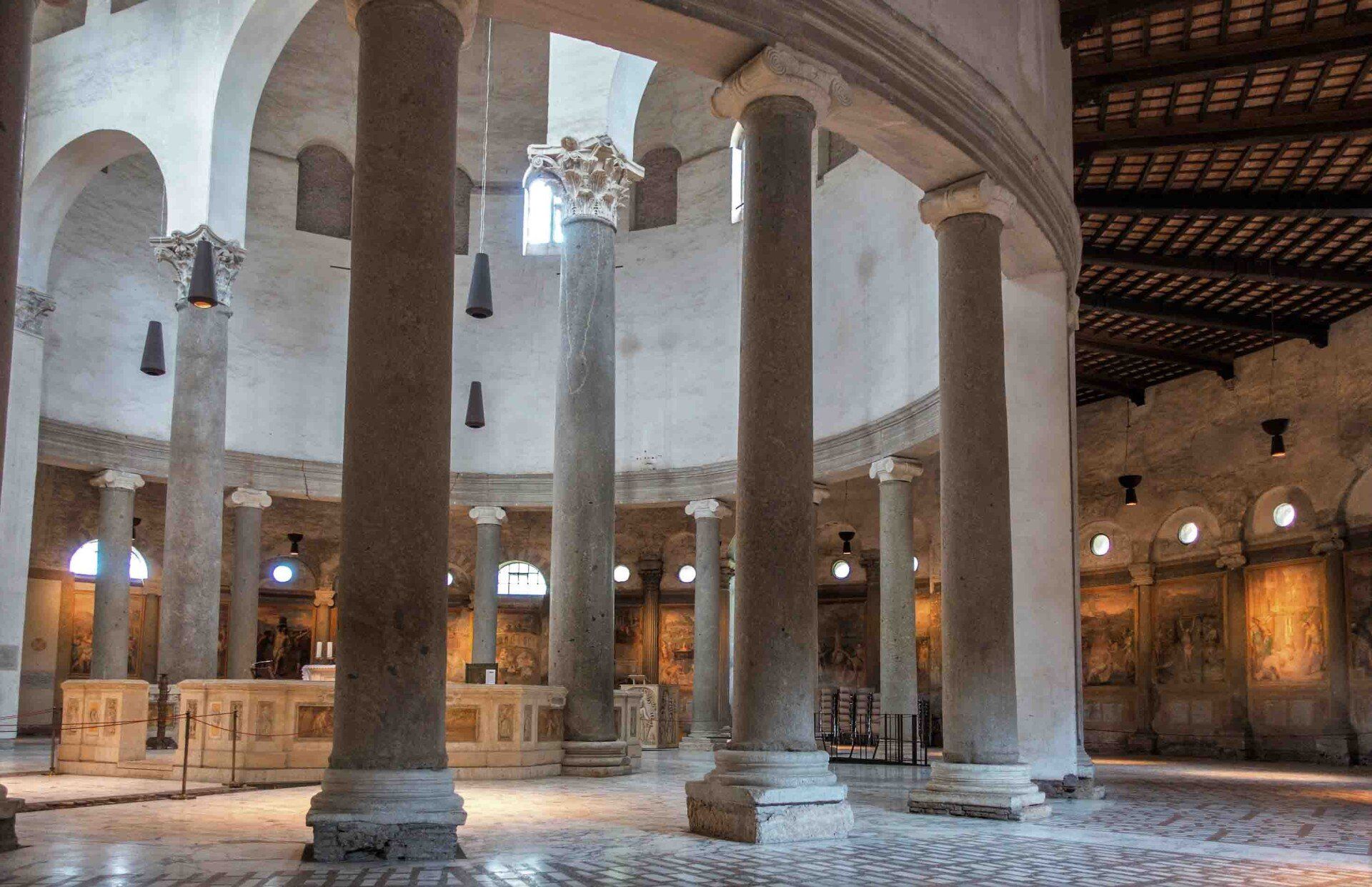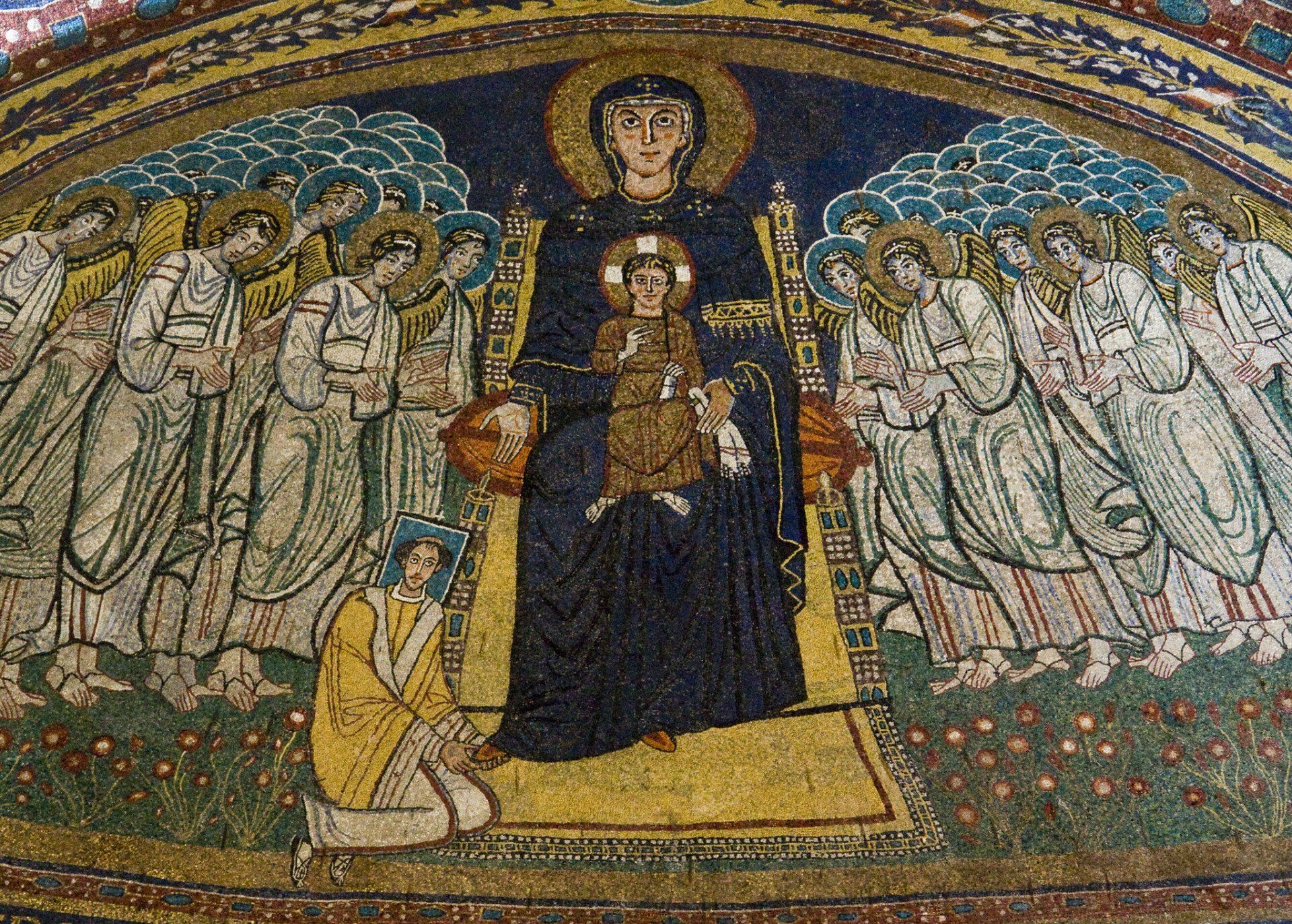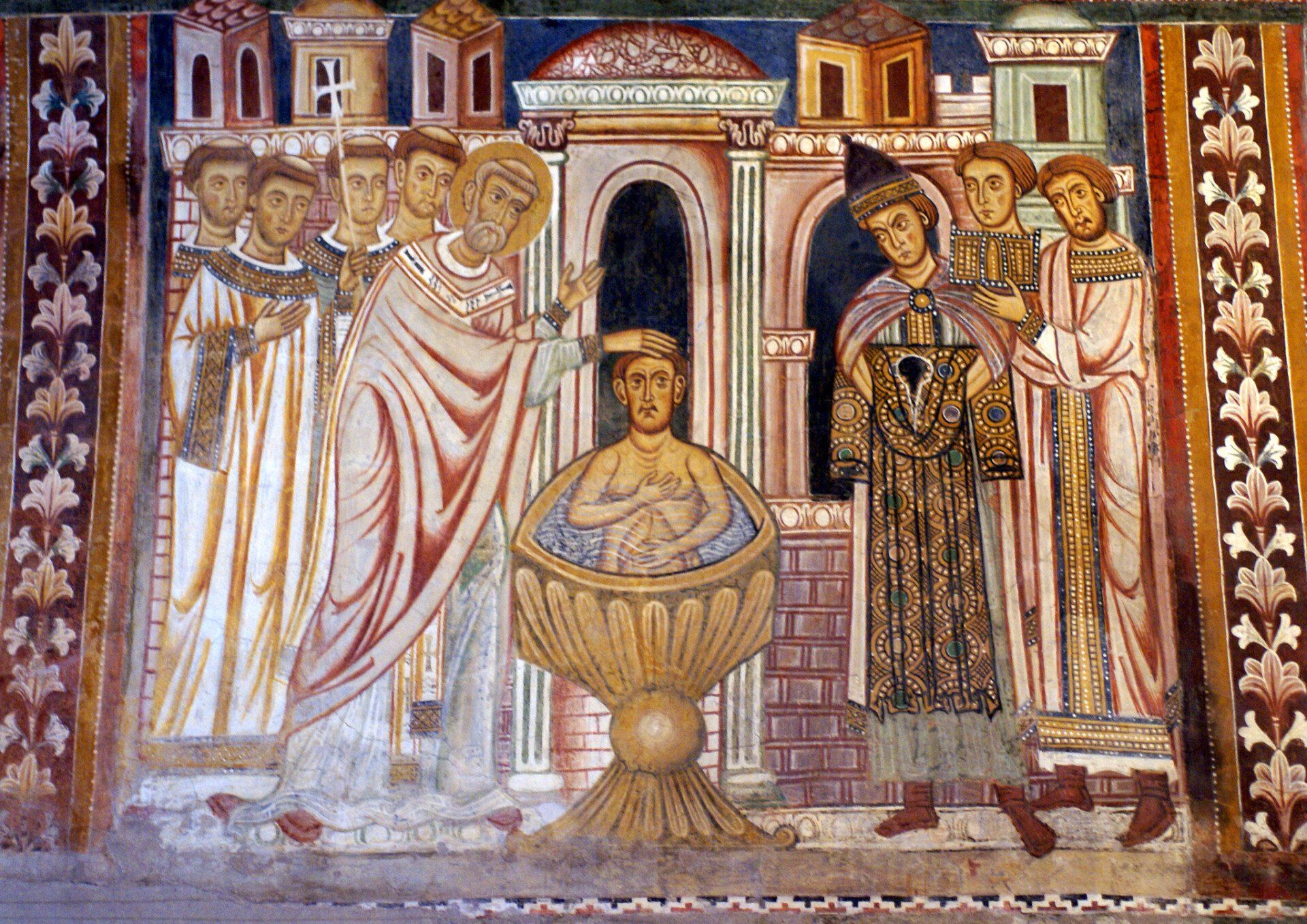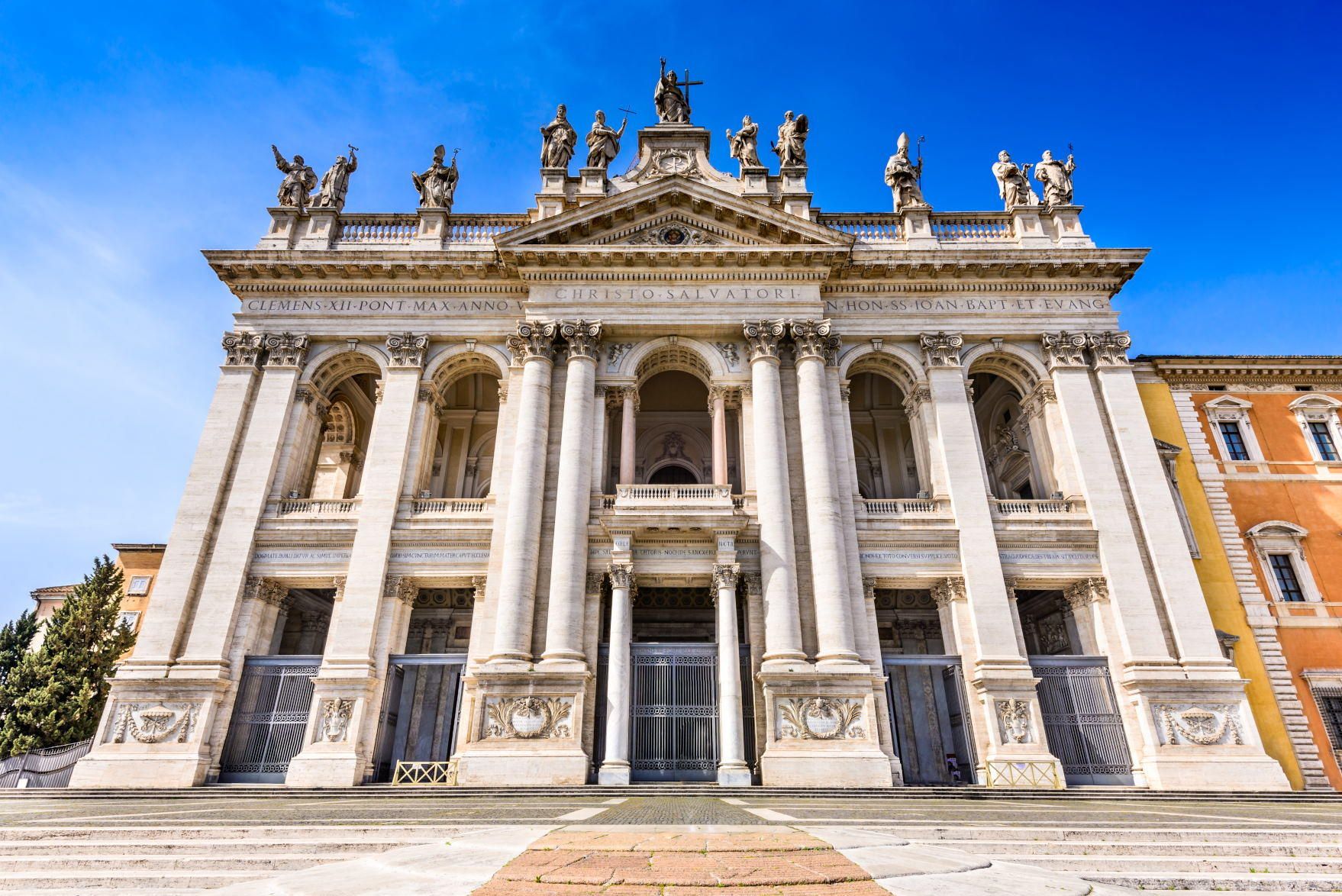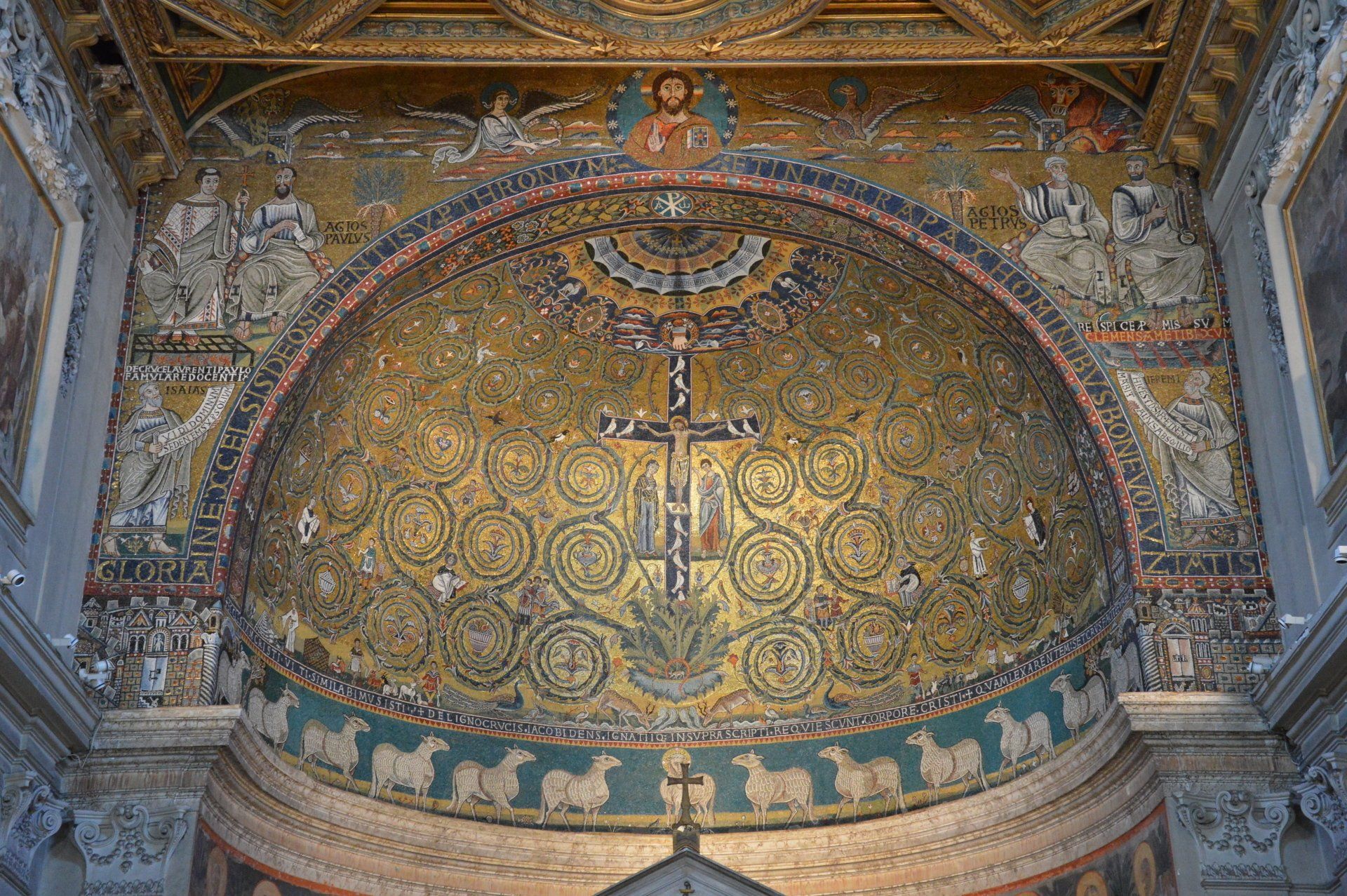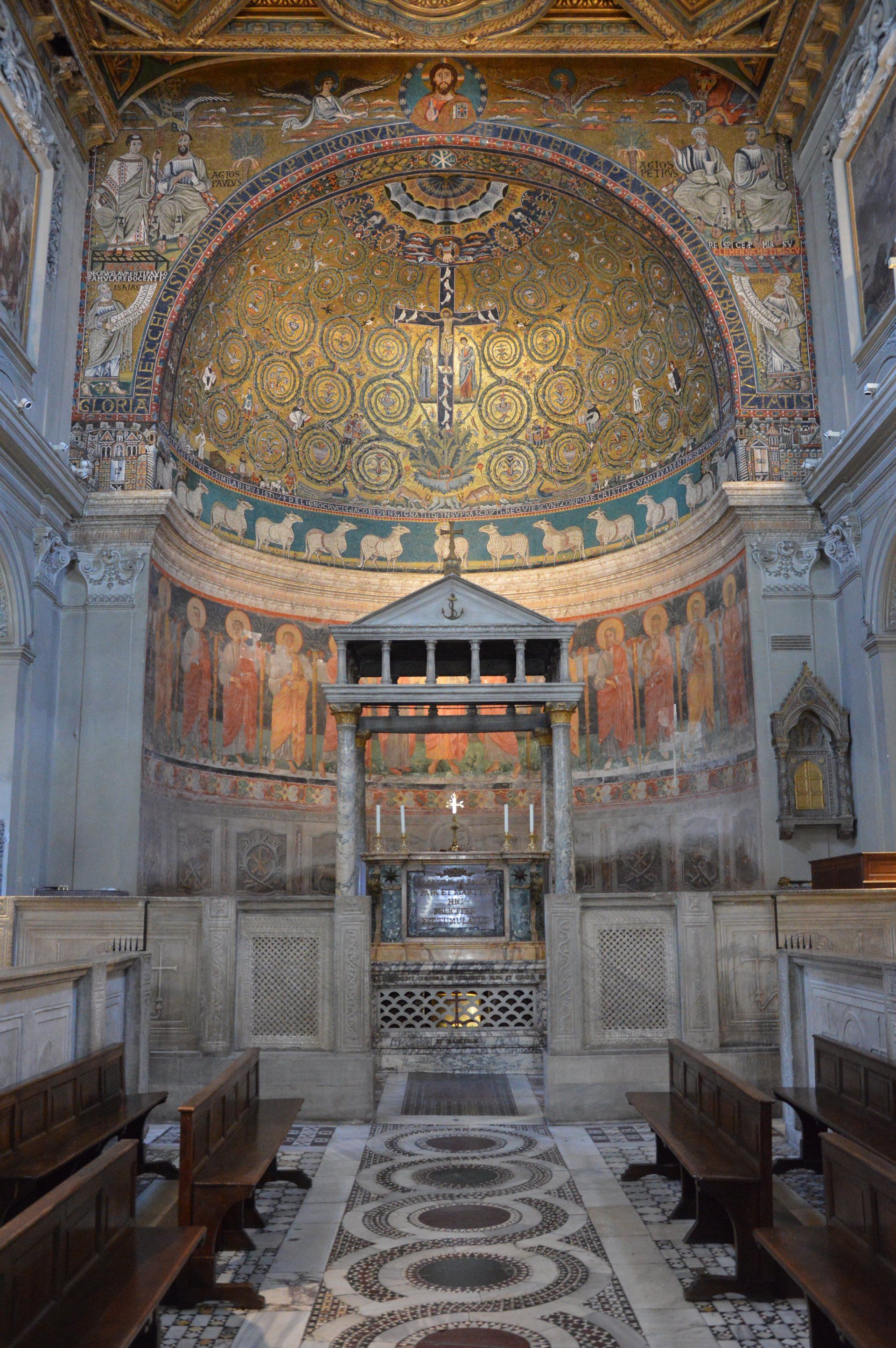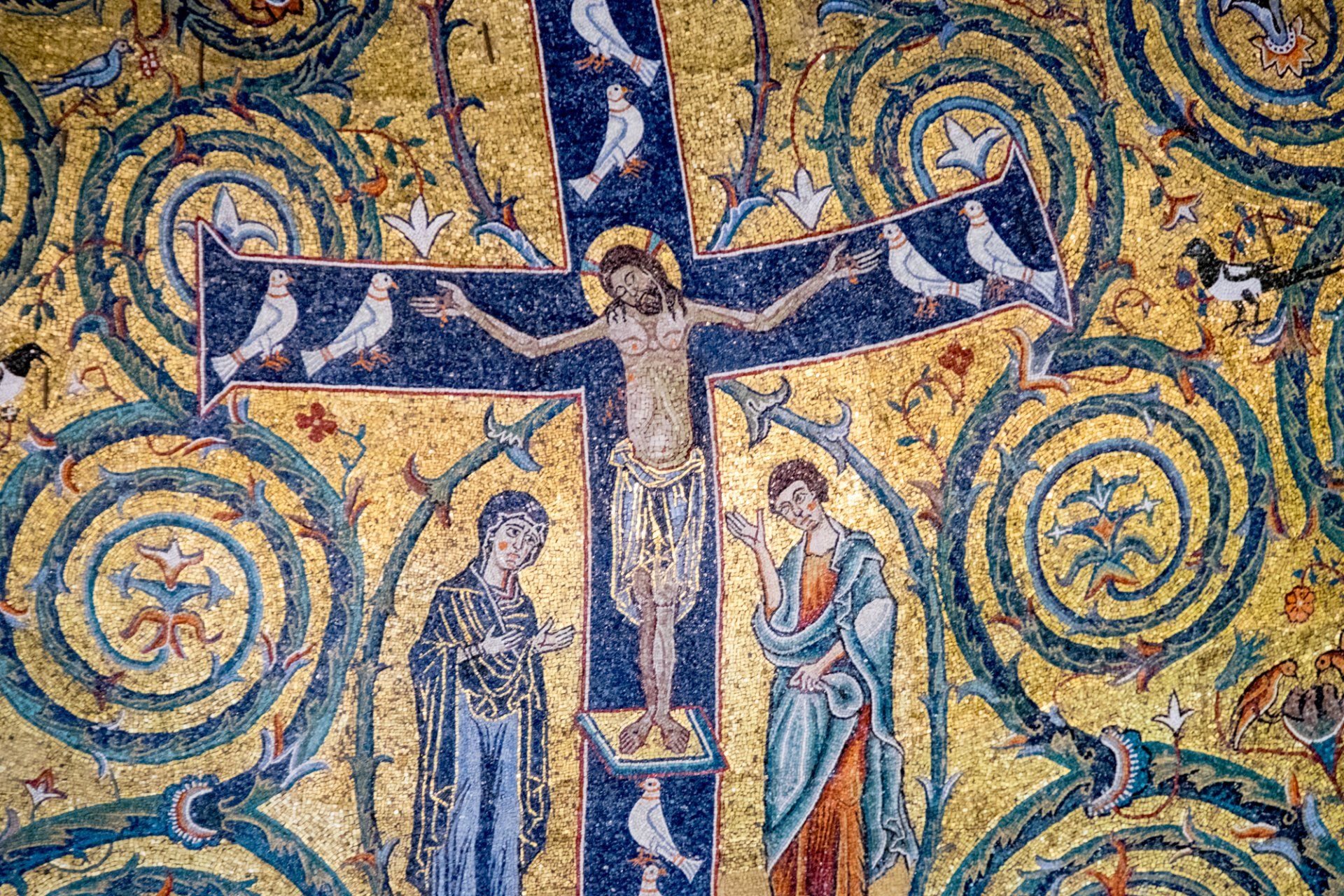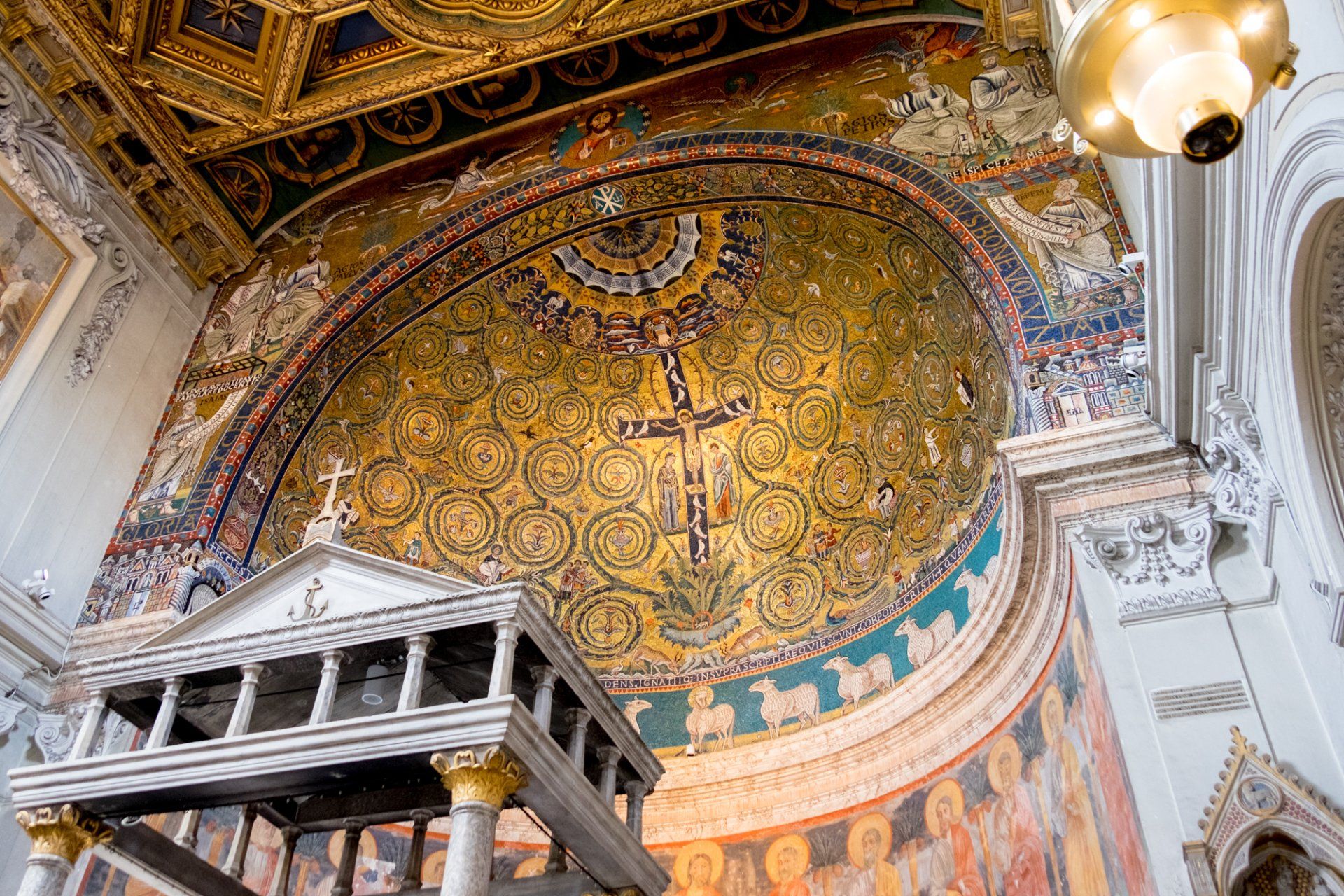Rome: A Lenten Pilgrimage
__________________________________________________
2: THE CELIAN HILL
led by Dom Brendan Thomas
10am to 1pm: Wednesday 29rd March 10.00am
or online afterwards
Retreat Day Timetable
For those who join us live via Zoom
Please feel free to join in as little or as much as you are able.
From 9.45 connect via Zoom to begin at:
10.00am LIVE Opening prayers and introduction.
AM VIDEO REFLECTIONS – Watch at your own time (website).
12.00 noon LIVE Connecting together with Zoom for final thoughts, conversation and closing prayer to finish by 13.00
The final online Lent day will be on Tuesday 5th April
Welcome to this online Retreat. We hope you find these reflections helpful.
3. St Gregory the Great and the Celian Hill
-
St Gregory the Great to St Augustine
"Don’t destroy them” he says, “but instead sprinkle them with holy water, set up altars in them, and place relics there. In the places where it has been the pagan custom to offer sacrifices … allow them to celebrate Christian festivals instead, in another form on the same date… We cannot wipe the whole past from these savage souls all at once. A man does not climb a mountain all in great bounds, but by taking slow, steady steps!
4. San Clemente
-
From 'A Letter from Rome': Cecil Day Lewis
"Century into century rotting down,
Faith piled on faith, Methra on Jupiter,
Christ upon Mithra, Catholicism on Christ,
Temples imbedded in churches, church-stones in palaces:
Think of the pagan gods, demoted to demons,
Haunting and taunting the Early Fathers; long-dead
Lights of love, immortalized as Madonnas,
Demurely smiling at man's infant idealism.
Superstition, sanctity, cruelty, laws, art, lust -
Layer after layer laid down, course upon course
They renew the soul of this city, a city whose prospects
Are quarried out of its bones, a soul digesting
All foreignness into one rich dark fibre.
Rome, I can tell you, is the very type of
The hugger-mugger of human growth.
Excerpt from "A Letter From Rome, by Cecil Day Lewis".
-
Pope Benedict XVI on Sant Clemente
The Apse Mosaic of San Clemente in Rome
a meditation by Joseph Ratzinger, Pope Benedict XVI
If we enter the historically rich church of Saint Clement's in Rome by way of the atrium, which, with its walkway of columns and the fountain in the middle, reminds us of the plan of the ancient Roman house, we are immediately seized by the sight of the great apse mosaic, with its golden background and shining colors. Our eye remains fixed on the picture of Christ in the middle. Christ has inclined his head and given his spirit into the hands of his Father. A great peace emanates from his face, from his entire figure. If we were to seek a title for this depiction of the Crucified, words like reconciliation and peace would immediately occur to us. Pain is overcome. Nothing of wrath, of bitterness, of accusation lies in the picture. The biblical saying that love is stronger than death can be seen here. Death is not the main thing we see. We see love that through death is not abolished but rather stands out more than ever. Earthly life is extinguished, but love remains. The Resurrection thus shines already through the scene of crucifixion.
If we linger before the mosaic, we notice that this Cross is in reality a tree, from beneath which four sources of water originate, at which deer slake their thirst. The thought of the four rivers of paradise arises, and the phrase in the psalmcomes to mind: "As a deer longs for flowing streams, so longs my soul for you, O God" (Ps 42:1-2). The tree that comes from living waters is fertile. We now notice that the rich network of branches that fills the entire breadth of the picture is not simply an ornament. It is a great vine whose branches grow forth from the roots and limbs of the tree of the Cross. They extend over the whole world in great circling motions, drawing it into itself. The world itself becomes a single large vineyard. Between its shoots and amid its coils, the fullness of historical life stirs. The work of shepherds, of peasants and monks, of animals and men of all kinds, the whole colorful diversity of existence, we find depicted in images full of fantasy and joie de vivre.
But there is still something else. The Cross not only grows in breadth. It has its height and its depth. We have already seen that it reaches below into the earth, waters it, and brings it to bloom. Now we must still regard its height. From above, out of the mystery of God, the hand of the Father reaches down. Thereby movement comes into the image. On the one hand, the divine hand appears to lower the Cross from the height of the eternal in order to bring the world life and reconciliation. But it draws upward at the same time. The descent of God's goodness brings the whole tree, with all of its branches, into the ascent of the Son, into the upward dynamic of his love. The world moves from the Cross upward to the freedom and expanse of the promises of God. The Cross creates a new dynamic: the eternal, futile circling around what is always the same, the vain circular motion of endless repetition, is broken open. The descending Cross is, at the same time, the fishhook of God, with which he reels up the entire world to his height. No longer circling but ascent is now the direction of history and human life. Life has received a destination; it goes with Christ to the hands of God.
But now we must ask: Is all of that true? Or is this one of the never-fulfilled utopias with which mankind attempts to console itself over the vanity of its history? Does any reality stand behind the image? Can there be a reconciled world that has become life's great garden of paradise? Two considerations may help us find an answer. The artist has not taken the picture of the world as God's vineyard, growing out of the Cross, without good reason. He is thinking of the words of Christ: "I am the vine, you are the branches" (Jn 15:5). The Cross as vine points us from the mosaic below to the altar, on which the fruit of the earth again and again is changed into the wine of the love of Jesus Christ. In the Eucharist the vine of Christ grows into the whole breadth of the earth. In its worldwide celebration, God's vine extends its circles over the earth and carries its life in fellowship with Christ. In such a way the image itself shows us the way to reality: Let yourself be drawn into the vine of God, it tells us. Give your life over to the holy tree that grows ever new from the Cross. Become a branch of it yourself. Keep your life in the reconciliation that comes from Christ, and let yourself be drawn upward by him.
When the apse mosaic of San Clemente was created, there was as yet no feast of Corpus Christi. The sense of that day is, however, wonderfully represented here. For it shows, indeed, how the Eucharist spans the world and transforms it. The Eucharist belongs not only in the Church and to a closed community. The world should become eucharistic, should live in the vine of God. But that is Corpus Christi: to celebrate the Eucharist cosmically; to carry it even to our streets and squares so that the world, from the fruit of the new vine, may receive healing and reconciliation through the tree of life of the Cross of Jesus Christ. We celebrate the feast in this sense. Its procession is like a loud call to the living God: Yes,fulfill your promises. Let your vine grow over the earth, and let it become the place of reconciled life for us all. Detoxify this world through the waters of life, through the wine of your love. Do not let your earth shatter from hate and from man's presumption of omniscience. You, Lord, are yourself the new heaven, the heaven in which God is a man. Give us the new earth in which we men become branches of you, the tree of life, steeped in the waters of your love and taken up into the ascent to the Father, who alone is the true progress
from Images of Hope, Ignatius Press
-
San Clemente Website
Those who register will receive more detailed instructions on how to connect with Zoom and the format of the day.
Cost
There is no charge for this day. It is to help in these difficult times.
You are, of course welcome to leave a donation to support us in our monastic life and mission.
Subscribe to our Email ...
To receive information to join this and other retreats and events,
as well as occasional news from Belmont, sign up to our newsletter.
You can unsubscribe at any time.
Our Monastery
Belmont AbbeyRuckhall LaneHerefordHR2 9RZ
Phone: 01432 374710E-mail:
Enquirieswww.belmontabbey.org.uk
HOW TO FIND US
Principal office: Belmont Abbey, Ruckall lane, Hereford HR2 9RZ.”

